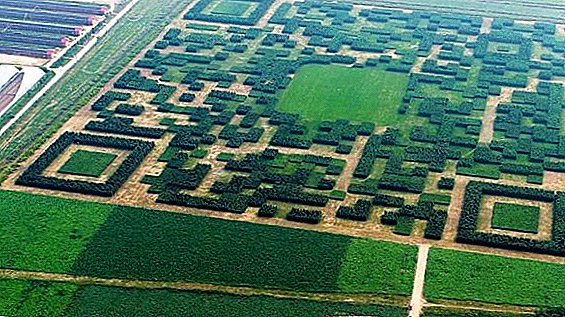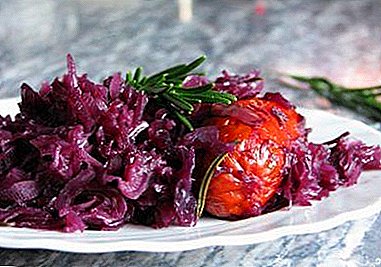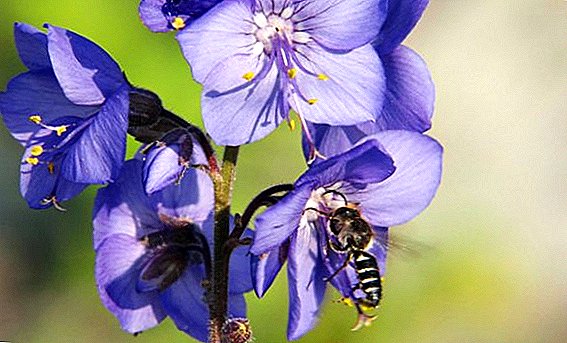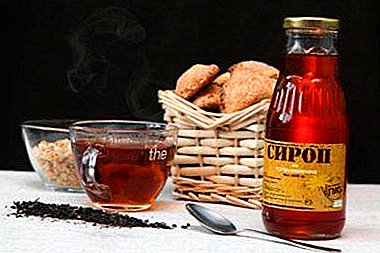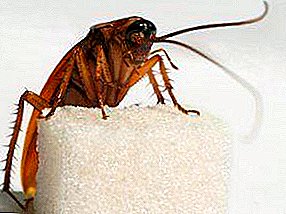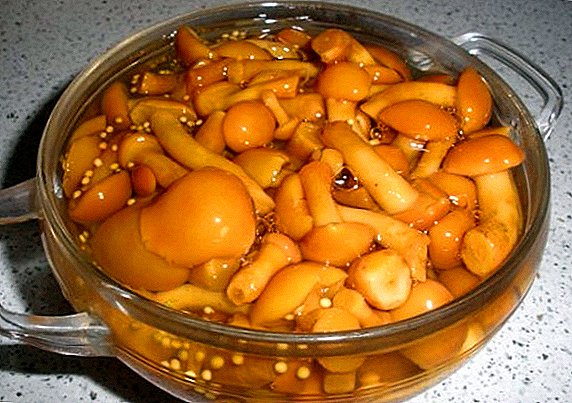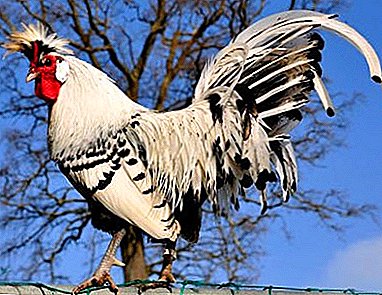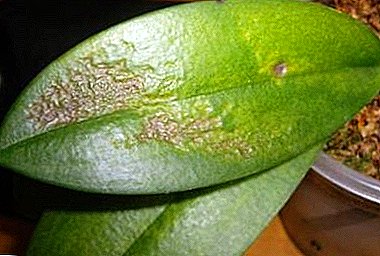
Bright flowers-lights, pleasant green foliage, elegant appearance - balsams have been a long-time welcome by residents of window sills, loggias and garden plots. A colorful plant needs a simple care, to which it responds to the ovary of new buds and the glossy shine of the leaves. But even this unpretentious plant can hurt or be attacked by parasites.
Insect pests interfere with the normal development and growth of a beautiful plant. It is about the pests that can annoy the fungus-balsamic will be discussed in our article. How to deal with annoying insects and preventive measures to prevent their appearance.
Exposure of indoor plants to various diseases
The main reason for the weakening of the green pet, its wilting and stalling is inappropriate conditions or lack of care. A weakened balsam is susceptible to a number of diseases, and it is also an easy prey for various pests.
The second name of the plant is Roly Wet. This is due to increased moisture-loving culture. Its foliage and stems are 50% water. Balsam loves moist soil and air. And these are ideal conditions for the appearance of pathogens. The houseplant is particularly susceptible to the following diseases.
- Downy mildew. Pathogen - fungi (penetrates the green parts with moisture). Leaves covered with a whitish bloom, over time, the leaf plate turns black and falls (learn why the leaves fall and ache and how to save the flower, you will learn here). Fungicides are suitable for treatment (Vitaros, Baktofit).
- Gray rot. Cause bacteria from soil or water. Signs - brown patina and gray spots. For treatment is suitable spraying garlic infusion or Fundazole.
- Bacteriosis Watery spots appear on the foliage, later they affect the whole bush. Disease control - removal of affected parts and treatment with Bordeaux mixture.
About why the room balsam fall buds and flowers, what are the ways to address and preventive measures, read our article.
The main hazards: photo, diagnosis and methods of dealing with them.
On the green room handsome mites usually get plants - small pests that feed on juice. Thrips, whiteflies and aphids are also dangerous for balsam. In more rare cases, nematodes and sciarides appear on the bush.
Mite
Symptoms of spider mite infection can be noticed.looking around the back of a sheet or internode. Characteristic features:
- thin white film wrapping the sheet;
- small dots on the sheet plate;
- greens lose their shine;
- flowering loses intensity, little buds, flowers dim.
The causes of ticks are heat and dry air in the room. The fight consists of a series of sequential actions.
- Trim damaged parts.
- To process a bush soap solution. Dilute in water or tar soap, foam. Apply the resulting foam on the balsam for 5-7 minutes, then rinse.
- Processing chemicals. Fits Vermitek and Fitoverm. The dosage is indicated in the instructions.

Aphid
Signs of infection on the plant is very difficult to consider. But on the walls of the pot there will be distinct views of the parasite's nest of whitish plaque. Identify aphids on the balsam can be when inspecting the root or during transplantation.
The danger of an insect is that it sucks the plant sap from the leaves. Because of this, their deformation occurs, growth stops. The process of photosynthesis is disrupted or stopped, as a result - the balsam does not develop and dies. How to deal with aphids:
| Primary set of actions |
|
| Folk recipes for spraying | Ingredients:
To take components in equal proportions (on 1 st.l). Pour boiling water, insist 12 hours. Use for spraying. Soil for the prevention of re-infection sprinkled with ash, tobacco dust. |
| Chemicals | Suitable drugs:
Dosage and use depends on the size of the balsam (see instructions). Before treatment with chemicals, the soil should be covered with a film. |
Aphids reproduce in dry soil. The reason for the appearance is irregular irregular watering.

White fly
The insect resembles a small white mole. The pest lays eggs on the back of the leaf, later larvae hatch from them, which can eat the whole balsam bush. Over time, the skin of the larvae hardens, this makes them invulnerable to the action of some chemical preparations. To eliminate the individuals, re-treatment is required with an interval of 5-6 days.
Attention! The whitefly releases a sticky sugary liquid that contains pathogens of soot.
The symptoms of the attack - the leaves lose their green tint, yellowish spots appear on them, they dry out and fall off massively (you can learn about why the leaves turn yellow in the room balsam and how to reanimate the plant). The causes of the parasite are warm, moist and stale air.
How to overcome the pest:
- Mechanical. Whitefly eggs can be washed off with water. Handle both sides of the sheet plate.
- Removing the bitten parts.
- Pest control by insecticides: Malathion, Actellic, Tanrek. These are poisonous preparations that can only be processed on the air (on the balcony, on the street).
- An alternative to chemicals is garlic tincture. 1-2 pieces to grind to the formation of gruel, pour boiling water, leave for 2-3 hours. Spray a bush 2 times a day

Thrips
The danger lies in 2 factors: the weakening of the bush and the possible infection of the mosaic virus (thrips carry pathogens). You can diagnose a problem by noticing the deformation of young foliage at the apex and a change in the growth point. The edges of the leaves dry, in the center of the corolla noticeable movement of small insects.
- Tanrek. 1 ml per 5 liters of water or 2 ml per 10 liters of water.
- Actellic. Use with heavy infection. 1 ampoule of the drug in 1 liter of water.
Repeat spraying after 5-6 days.

Bubbles and mushroom mosquitoes
Podroe - earthen flea. They almost do not harm, live in the soil, feed on organic matter. Poduns are a danger to seedlings and cuttings: gnawing up the roots. You can notice them when watering, as individuals begin to jump.
Sciarides or mushroom mosquitoes are small dark midges. Low hazard to plants. The larvae are white, their head is black. Also damage the root system of weak or small plants.
The reason for the appearance of these insects is common - excessive watering. You can reduce the population by drying the ground in a pot. For complete destruction in the ground you need to mix the drug Thunder 2.

Preventive measures
The main aspect of prevention is proper care. For a novice florist, it is advisable to familiarize yourself with the recommendations presented, which will facilitate care and make it literate.
- Balsam requires moisture. It is necessary to water a bush regularly and plentifully. For the prevention of bogging the soil in the pot you need to make a good drainage. You can take pebbles, gravel, vermiculite and other components to choose from.
- When spraying water should not linger on the green parts, colors.
- Make the feeding better in the fall. Fertilizers must contain phosphorus and nitrogen.
- The plant should get enough sun.
- In winter, rearrange the pot with balsam in a cool place (15-17 degrees), reduce the number of waterings.
- In the spring, pinch young and old shoots that do not grow and do not give flowers (about why the balsam does not bloom, as well as tips on care and cultivation, read here).
Balsam - a popular houseplant with bright colors and glossy greens. It has a high moisture-loving. In such conditions, fungal diseases can develop. Improper care weakens the shrub, and it becomes a target for pests. A tick, thrips, whitefly, aphid can parasitize on a balsam. You can eliminate them with the help of acaricides (for ticks) and insecticides.


